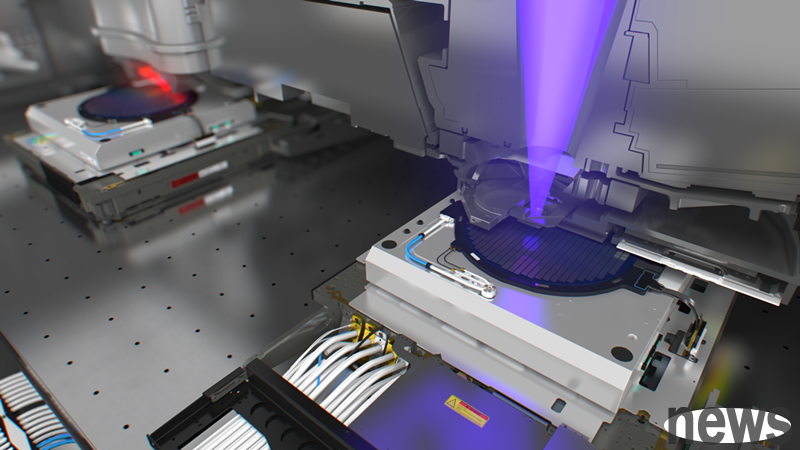
The competition for dominance in the field of artificial intelligence (AI) between the two major powers, the United States and China, is becoming increasingly fierce. High-end chips have become the core battlefield of this new Cold War. Since the United States imposed severe chip sales sanctions on China in 2018, it has had a real and far-reaching impact on China's high-tech development. According to a recent report, China was suspected of causing damage to the exposure equipment produced by the Dutch company ASML when it was reverse engineering it, and ultimately had to seek technical support from the original manufacturer.
The National Interests reported in a special article that this incident not only vividly demonstrates the lethality of the US chip ban, but also highlights that although China’s economy and technology strive to catch up with the United States, there is still a long and rugged road to be fully autonomous in the extremely complex semiconductor manufacturing field.
The article stated that an important part of China’s strength comes from its continuously developing high-tech industry, which largely benefits from its advanced manufacturing capabilities. However, this model of rapidly catching up with the West has a less "admirable" approach. Because China's high-tech and manufacturing ecosystem exists because the United States and the Western world have transferred a large amount of manufacturing capabilities to China in the past.
In essence, China has developed rapidly since becoming the "world's factory" and established a high-tech production ecosystem that can rival the United States. However, as scholar Oded Shenkar has pointed out in his work, the entire foundation of China's economy is based on dramatically shortening long and onerous development cycles through stealing, or copying, more advanced and innovative national and foreign companies. Previously, Taiwanese-born Kai-Fu Lee also explained that China’s local technology companies are also stealing and plagiarizing from each other. This results-oriented culture has the sole goal of creating new technologies and products that will expand corporate profits, enhance national prestige, and build national security.
Because China has launched its dynamic local industries by copying Western technological capabilities, its development model has also left serious bottlenecks in the face of geopolitical crises. Since 2018, the United States has launched what it calls a "tech war" against China as part of its broader trade war with China. The United States has imposed sanctions on sales of high-end chips. In response, China has imposed strict export controls on rare earth minerals, which are crucial for making chips and other important high-tech products, especially U.S. military technology.
However, the U.S. ban on chips has had substantial consequences for China’s high-tech development. The bans on high-end chips complicate China's ability to keep up with the United States as the race between the world's two largest powers for dominance in artificial intelligence (AI) intensifies. More importantly, the U.S. chip ban effectively freezes China's ability to reliably develop its own high-end chips, forcing it to use older, larger chips. The extremely expensive and complex wafer manufacturing equipment required for manufacturing wafers globally - photolithography exposure machines - is mainly produced by the Dutch company ASML. Due to U.S. sanctions, China is restricted from using older ASML deep ultraviolet exposure equipment (DUV), which severely hinders China's ability to surpass the United States in AI creation.
In order to break through the U.S. technology blockade, news has pointed out that China has been trying to reverse engineer ASML DUV exposure machines in recent months. Their purpose is not to mass-produce these older machines. Instead, Chinese technicians try to replicate the equipment locally by understanding the intricacies of the machine. More importantly, more advanced local exposure equipment was developed to further produce new and more advanced wafers that the United States refused to provide.
However, reverse engineering equipment such as photolithography machines is not as straightforward as replicating most industrial designs. Sources indicate that the machine appeared to be damaged during the disassembly process of one of the older ASML systems in China, prompting them to contact ASML for repair assistance. Moreover, when ASML technicians arrived in China, they quickly discovered that the machine was not simply malfunctioning, but had been damaged as a result of China's attempts to disassemble and reassemble it. This incident is a strong demonstration of the pressure caused by the US chip ban on China. But it also shows that the United States cannot rely solely on the chip ban to leave China behind forever.
Although, China has caught up with the United States in key technological and economic fields, which has had a substantial impact on the overall balance of power between the two countries. But the fact that attempts to reverse engineer ASML DUV exposure equipment ended up damaging it shows just how important this task is to China.
However, this also shows that Beijing still has a long way to go. Without a deep understanding of the precision involved, attempting to reverse engineer ASML exposure equipment may end up destroying expensive equipment rather than learning how to build a more advanced system. Therefore, as long as China continues to threaten the United States, and especially as long as China continues to maintain export controls on rare earth minerals, the chip ban will continue. Therefore, China will almost never stop reverse engineering DUV exposure machines. Finally, it is worth continuing to observe how the results will develop and affect the competition between the United States and China.